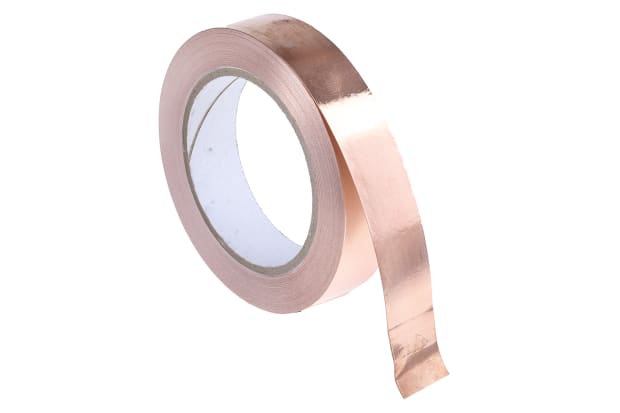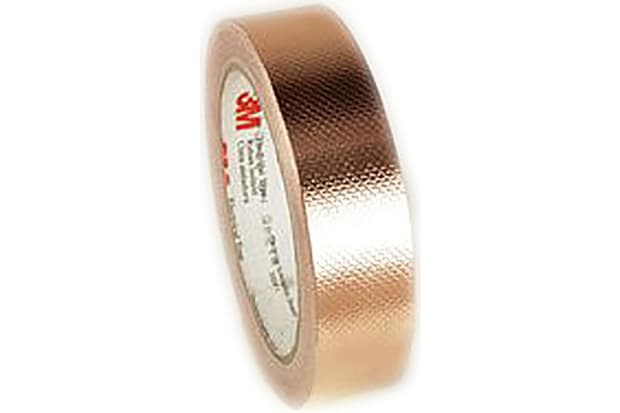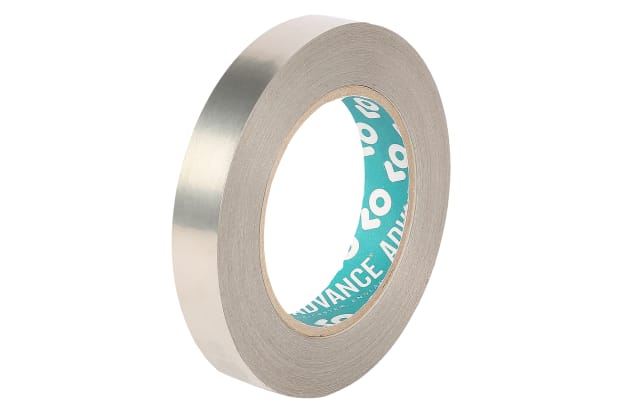- Published 9 Apr 2024
- Last Modified 9 Apr 2024
- 10 min
Comprehensive Guide to Copper Tape: Uses and Types
Learn all you need to know about copper tape in our guide, including its uses and the different types available.

Copper tape is a versatile and useful product that has a wide range of applications. In this guide, we'll take a closer look at what copper tape is, how it works, the different types available, and the various ways it can be used. Whether you're a seasoned professional or just getting started with DIY projects, this guide will help you understand everything you need to know about copper tape.
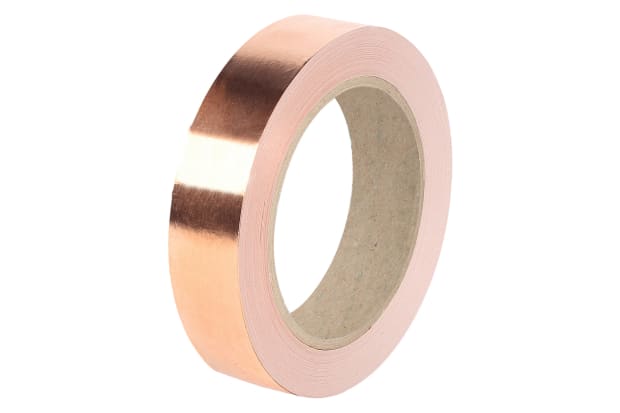
What is Copper Tape?
Copper tape is a thin strip of copper that is backed with an adhesive. It is highly flexible and can easily be shaped to fit a variety of uses and environments. It is a conductive material, meaning it can carry electrical currents, making it useful for a wide range of electrical and electronic applications.
There are two main types of copper tape: conductive and non-conductive. Conductive copper tape can conduct electricity on both the top and bottom of the tape, while non-conductive copper tape is only conductive on one side. This makes each type of tape best suited for different applications.
In the following sections we will explore in more detail how copper tape is used in these different scenarios.
How Does Copper Tape Work?
Copper tape works similarly to other types of tape, but with the added benefit of being able to conduct electricity. The tape is typically available in rolls of varying lengths and can be easily cut to size using a standard pair of scissors or specialist cutting tools for a more precise cut.
The key to using copper tape is to ensure that it is in direct contact with the components or materials that you want to connect or shield. When using copper tape for electrical connections, it is important to ensure that the tape is in direct contact with the conductive materials that you want to connect. For example, when using copper tape to create a paper circuit, you would need to ensure that the tape is in direct contact with the leads of the electronic components that you are using.
When using copper tape for electromagnetic shielding, you would need to ensure that the tape is in direct contact with the components that you want to shield. For example, when using copper tape to shield a guitar pickguard you would need to ensure that the tape is in direct contact with the components that you want to protect.
Types of Copper Tape
There are two principal types of copper tape: conductive and non-conductive. We'll explore each of these in more detail below.

Conductive Copper Tape
Conductive copper tape is designed to conduct electricity on both sides of the tape. This makes it a useful material for creating electrical connections in a wide range of applications.
One of the most common uses of conductive copper tape is in the creation of paper circuits. Paper circuits are a type of low-voltage electrical circuit that are often used in DIY or educational settings. Conductive copper tape is used to provide the current from one part of the circuit to another, making it an ideal material for this type of project.
Conductive copper tape can also be used in a wide range of other applications including:
-
Repairing damaged traces on circuit boards
-
Creating electrical connections in electronic devices
-
Shielding sensitive electronic components from electromagnetic interference
It is worth noting that the strength of the electrical connection made with conductive copper tape can fade over time, so alternative methods of connection may be needed to ensure continued conductivity over prolonged periods. Similarly, a single continuous strip of conductive copper tape will always be a more effective conductor than multiple strips joined together. Lastly, it should also be noted that the conductive adhesive on the tape is not designed to carry high levels of current.
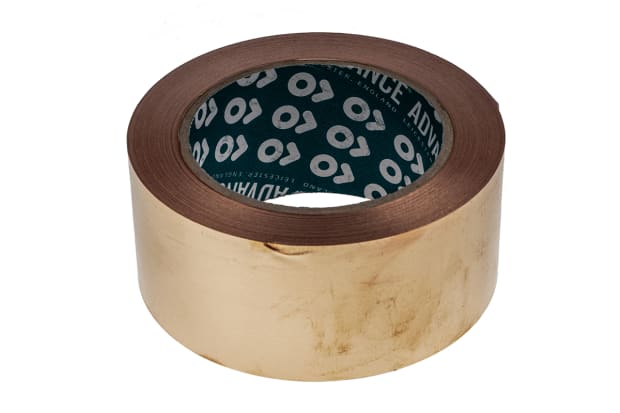
Non-Conductive Copper Tape
Non-conductive copper tape is only conductive on one side, typically the top of the tape. This makes it less suitable for electrical applications, as it cannot be used to create electrical connections in the same way that conductive copper tape can.
Non-conductive copper tape is often used in applications where the conductive properties of the tape are not needed. One of the most common uses of non-conductive copper tape is as a slug and snail deterrent. When used in this way, the tape is typically placed around the edges of plant pots or garden beds. Slugs and snails are repelled by the copper and will avoid coming into contact with it.
Non-conductive copper tape can also be used in a wide range of craft and decorative applications. Due to its attractive appearance, it is often used in projects where its metallic sheen can add a touch of elegance.
Copper Tape Uses
Copper tape has a wide range of uses and applications. In this section we'll explore some of the most common scenarios in which copper tape is used.
Copper Tape for Soldering
Copper tape can be used in a wide range of soldering applications. It is often used as a replacement for traditional wire in situations where a more flexible or low-profile solution is needed.
One of the most common uses of copper tape in soldering is in the creation of stained glass artwork. When creating stained glass pieces, hobbyists will typically use copper foil tape to wrap the glass pieces. This creates a handy guideline to follow when soldering the separate pieces together into the final image.
Copper tape is also commonly used in the creation of paper circuits. When creating paper circuits, copper tape is typically used to provide the current from one part of the circuit to another. This makes it an ideal material for this type of project.
When using copper tape in soldering applications it is important to ensure that the tape is in direct contact with the materials that you want to connect. For example, when creating stained glass pieces you would need to ensure that the tape is in direct contact with the glass pieces that you are using.
Copper Tape for Shielding
Copper tape is commonly used in electromagnetic shielding applications. Electromagnetic interference (EMI) can be problematic in certain situations. It can damage delicate components and cause excess electronic feedback, so shielding is an important way to safeguard and protect a range of equipment. Shielding essentially works by creating a conductive, grounded enclosure (a Faraday cage) around the component/s.
Copper foil tape can be used to shield components in a range of applications and environments. This could include everything from RF shielding to shielding a guitar pickguard to protect the instrument’s electronics from outside interference.
Copper tape can also be used in combination with other materials to provide additional shielding. For example, it is common to see copper tape used in combination with conductive fabrics to create more effective shielding solutions.
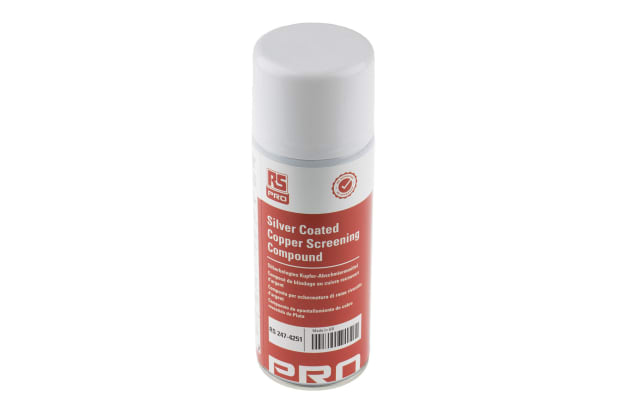
Copper Shielding Paint
Copper shielding paint is an alternative to copper shielding tape. It is available in aerosol form, designed to provide a low-resistance, RFI and EMI shielding coating for plastic electronic housings. Boasting enhanced adhesion, even surface coating, and strong scratch-resistant properties, copper shielding paint has a wide range of benefits and can be used with a variety of substrates.
Copper shielding paint is typically used in situations where a more seamless or integrated shielding solution is needed. It can be used to shield electronic devices or components without the need for additional materials or components.
Copper Tape for Plant Pots
Copper tape for plant pots is primarily used by gardeners to keep slugs away from plants. Slugs are pests which can ruin plants if left unchecked, and many gardeners choose to use copper foil tape to deter slugs and keep plants at their best.
The process is simple – merely sticking a strip of copper tape around the plant pot, just below the rim, to act as a barrier. There is discussion around the effectiveness of this method and whether copper tape does actually deter slugs, but many gardeners prefer to try using copper foil as opposed to less environmentally-friendly alternatives like certain slug and snail repellents.
Copper Tape for Stained Glass
Copper tape can also be used in the craft space for working with stained glass. Hobbyists creating stained glass artwork can use copper foil to wrap the pieces, creating a handy guideline to follow when soldering separate pieces together into the final image. Different thicknesses of copper tape are also available, making it easy to select a tape width that suits the size of your stained glass project.
To use, simply peel the tape and place it on the edge of the first piece of glass. Press it firmly down around the edge of the shape, taking extra care if the glass is sharp or jagged. Ensure that each new section of tape you apply overlaps with the last to avoid any gaps.
Copper Tape for Walls
Although copper tape is not intended specifically for use on walls, some people have adopted it as a means of creating attractive, decorative wall art. Due to its high levels of versatility, copper foil can easily be adapted and shaped to suit a variety of patterns and designs.
Geometric designs are common, but there are certainly no restrictions on your creativity! Alternatives include the use of washi tape or simply using masking tape to enable precise, accurate lines between different colours or shades of paint on a wall.
Copper Tape for Crafts
As previously mentioned, copper tape can be incorporated into a selection of different crafts and DIY projects. This can include stained glass artwork and wall art, as explored above, but it can also include a wide range of innovative craft ideas.
Just a few examples include adding a shiny border to artwork, creating textured pieces of art, or combining with other types of tape to create bespoke, metallic creations.
Copper Tape for Paper Circuits
Paper circuits are low-voltage electrical circuits that can easily be created using a selection of common materials. They are often used in DIY or domestic settings, often to teach children about circuits and electrical conductivity.
Copper tape is used to provide the current from one part of the circuit to another. There are numerous different circuit designs you can use for activities like this, but copper tape makes a great addition and is ideal for conducting low levels of electricity around the circuit.
FAQs about Copper Tape
Popular Brand
Browse related products from RS PRO
Browse related products from 3M
Browse related products from Advance Tapes
